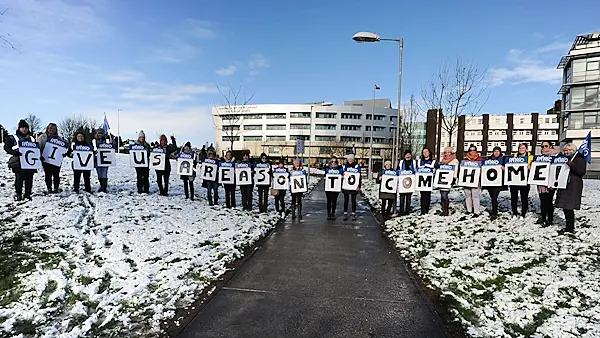A health systems expert says that the Irish Nurses and Midwives Organisation (INMO) needs to clarify what exactly they are looking for, and that the Department of Health is “actively misleading” the public with the figures it is publishing on nursing pay rates.
Anthony Staines, Professor of Health Systems at the Nursing and Human Sciences department in DCU told Newstalk Breakfast that a resolution to the nurses dispute is not going to come from an across the board pay increase.
“I think it's going to require a lot more thought as to what nurses do, expanding the role of nurses, changing elements of how nurses are managed, to improve the quality of working life for nurses in Ireland.”
He added: “No one seems to have justified the government's number and there's no detail behind it, the numbers that they produced, it would depend very much on who got the increase whether it was every single nursing pay scale or just staff nurse pay scales or the lower paid nursing pay scales. It's very hard to tell.
“INMO conversations have mostly been about staff nurses in hospitals and the relationship between their pay scales and those of other health care professionals and obviously the pay cuts they previously experienced. I'm not clear, I'm sure they're clearer than that.
“The department is actively misleading - the gap between most increments is 3%, as it happens the increments from point one to point two and point one is really a historical hangover, they're only on it for three months, but the increment there is 7%, so that shows up your pay increase, very dramatically.

“It's 7% from the first point to the second point - it averages 3.4% for all the points after that.
“The figures are accurate, but they reflect - they're confusing two things, increments are real and increments matter greatly to people, staff nurses at pay scale with 13 increments on it which runs about the same as the lower pay scale for executive officers in the civil service, not identical, but similar.
“People go up increments each year, presumably on the basis that they've more skills, more experience, the more useful contributors, this is pretty normal in the public sector, the question the union is addressing is the whole pay scale - they're arguing the whole pay scale is lower than for people like physiotherapists and that's true.
“It's a combination of three things one is increments, the second is an element of pay restoration which is part of the PSP process, and the third is changes in relation to pension reductions - yes their figures are correct, but it's unusual for a trade union to argue in terms of increments and in fact it's unusual for employers to present salary scales in terms of increments, the common practice is if you get a pay increase it effects every increment more or less.
“We don't have reliable figures for turnover which is a real problem and the Public Service pay report comments very unfavourably on that, but there's no suggestion that turnover is extraordinarily high in nursing, the issue of recruiting is much more challenging.
They have managed to recruit quite a few nurses over the last five years, which doesn't suggest that there's a huge challenge recruiting nurses, but there are some specific challenges.
“There are challenges recruiting nurses with particular skills and there is a dependency on two groups - on agency nurses and nurses from outside the European Union - both of those pose a problem to the overall health service and the stability of the overall health service and they're expensive to recruit.”






